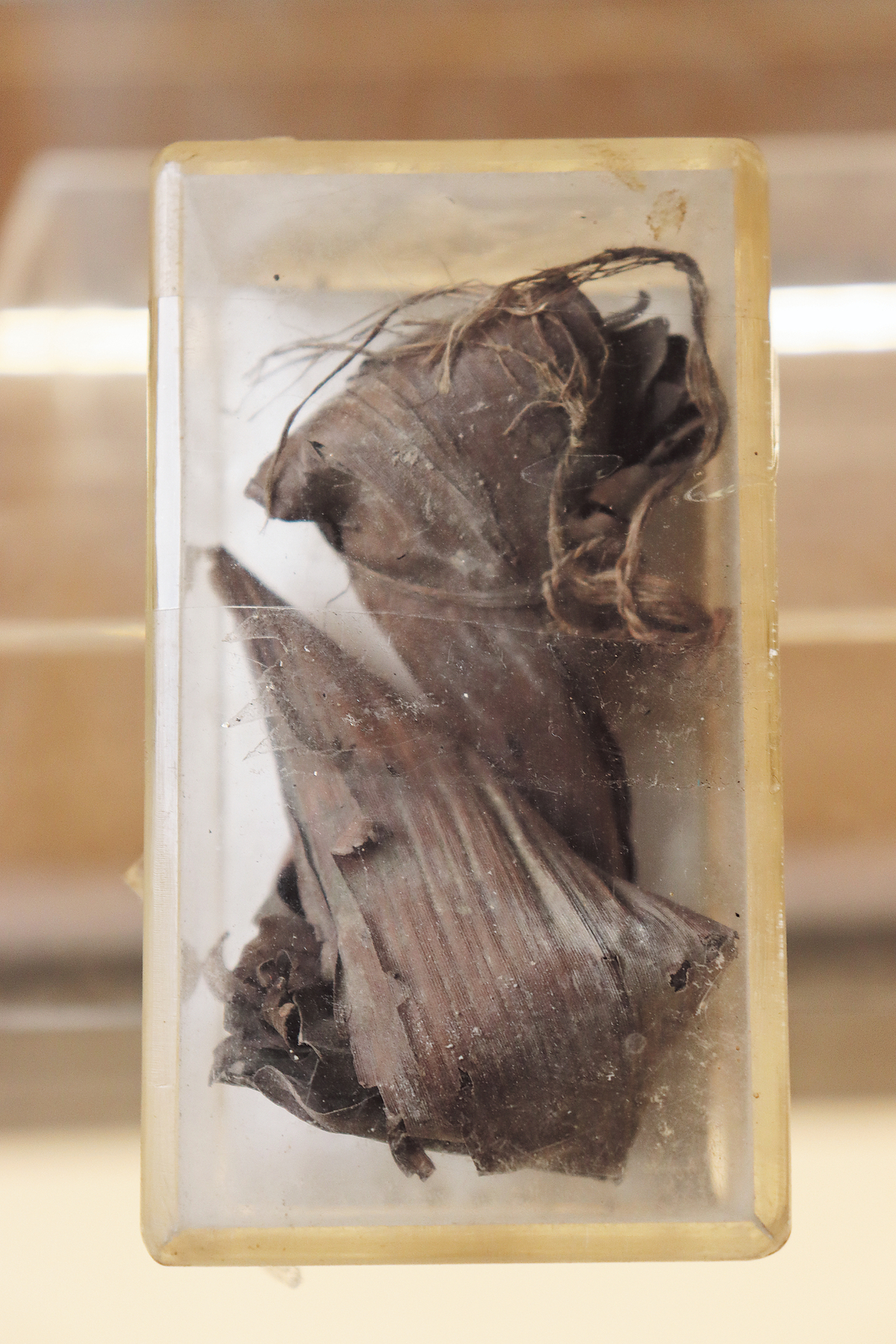
As the Dragon Boat Festival approaches, people visiting the De'an County Museum in Jiangxi province often gather around a particular display case to marvel at its contents: a pair of 750-year-old zongzi.
Eating zongzi — sweet or savory stuffed rice dumplings wrapped in plant leaves — is an enduring custom during the Dragon Boat Festival, which falls on Monday, the fifth day of the fifth lunar month.
The triangular rice dumplings in the museum, which are roughly 6 centimeters long and 3 centimeters wide, were unearthed in 1988 from a tomb built during the Southern Song Dynasty (1127-1279).
The woman buried in the tomb, surnamed Zhou, was found clutching a 40-cm peach branch with the dumplings tied to it.
According to the tomb inscription, Zhou was the daughter of a local official, hailing from today's Wuning county in the city of Jiujiang, and was buried in 1274.
"These are the oldest known triangular rice dumplings discovered in an archaeological context, and they are remarkably well-preserved," said Wang Zerong, the director of the museum. "They provide valuable insights into the diet of the Song Dynasty (960-1279)."
China's zongzi culture has a long history, with stories dating back thousands of years and known to every household.
"This also indicates that zongzi was already a common delicacy during the Southern Song Dynasty," Wang said.
The weaving technique used for the dumplings reflects local traditions and is remarkably similar to modern ones, he added.
The inscription mentioned that Zhou died in the fourth lunar month, coinciding with the approach of the Dragon Boat Festival.
"These rice dumplings are the star of our museum," said Li Jia, a museum guide. "Most visitors are captivated by them and spend a long time admiring them."
Embracing the digital age, the De'an County Museum has created 3D digital representations of its artifacts, including the Southern Song rice dumplings, to better showcase its archaeological finds.
"By scanning a QR code, visitors can view a 3D model of the rice dumplings along with an introduction, offering a more comprehensive understanding of these and other artifacts," Li said.


